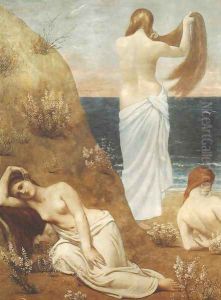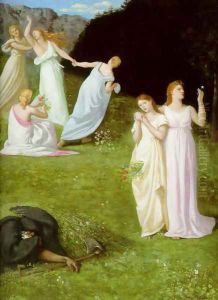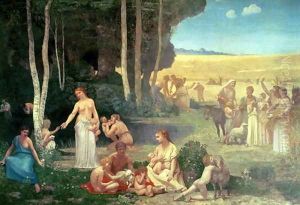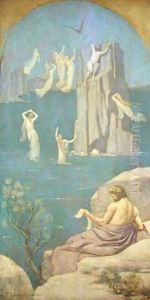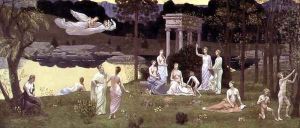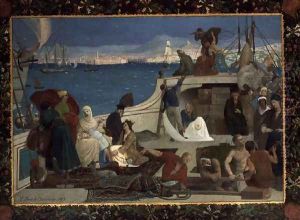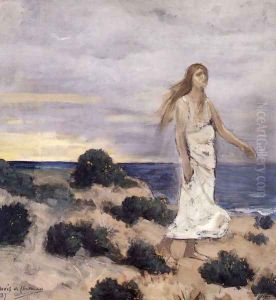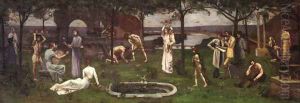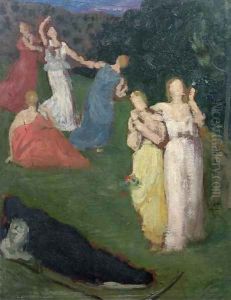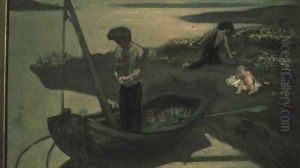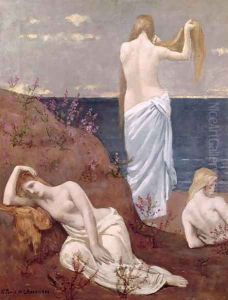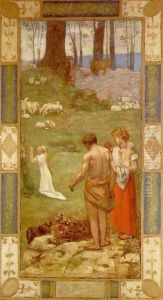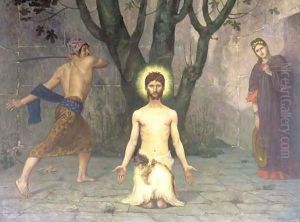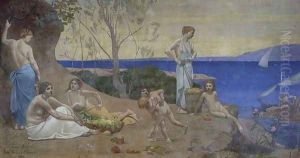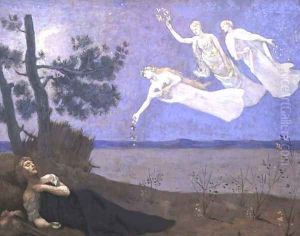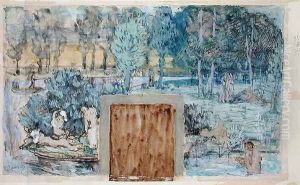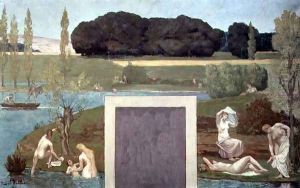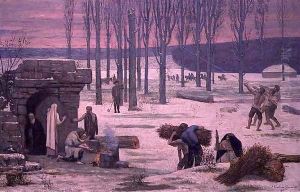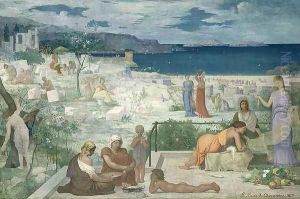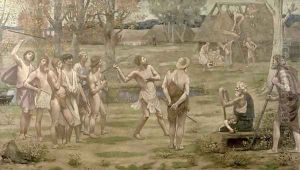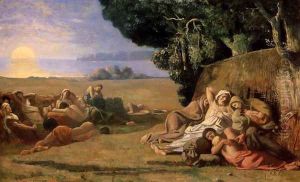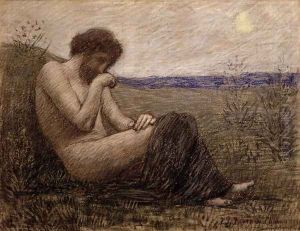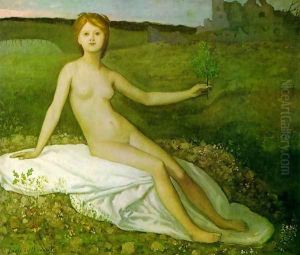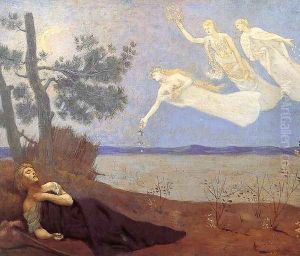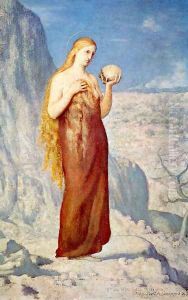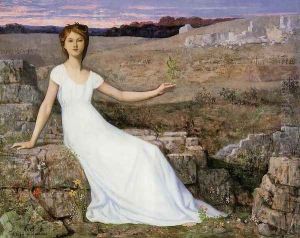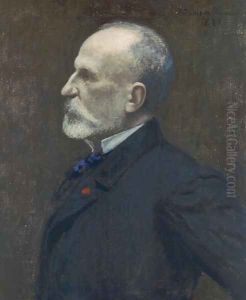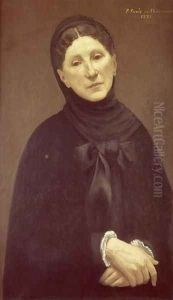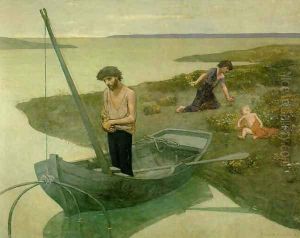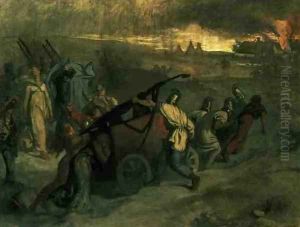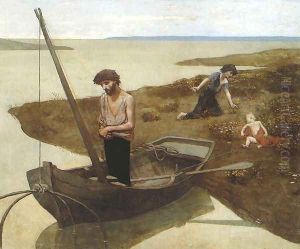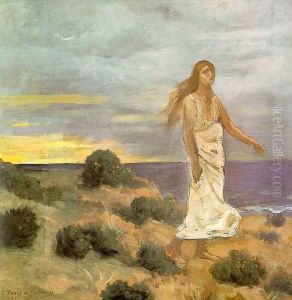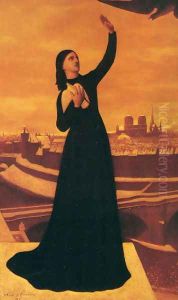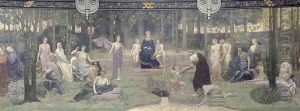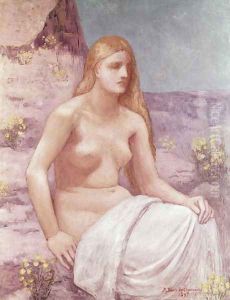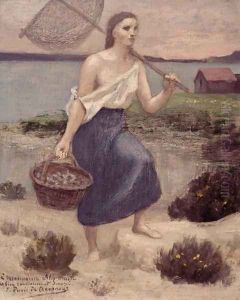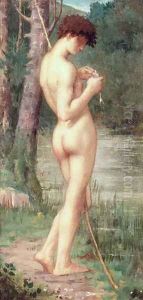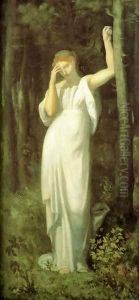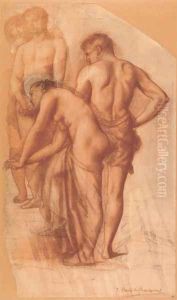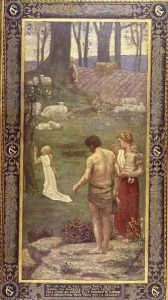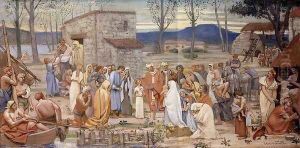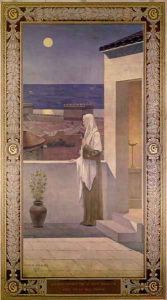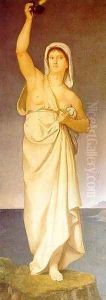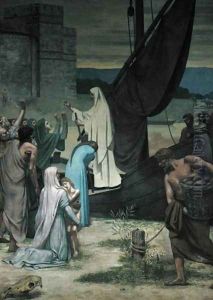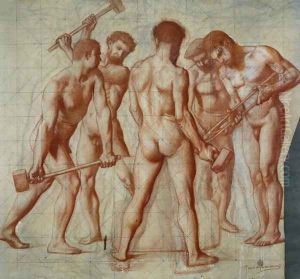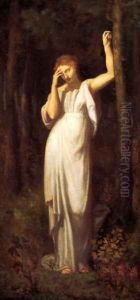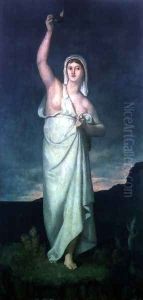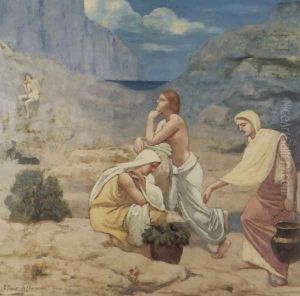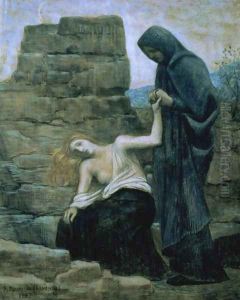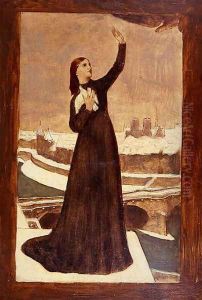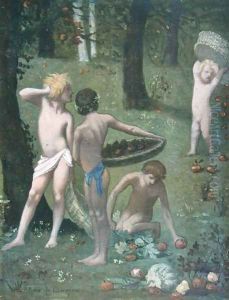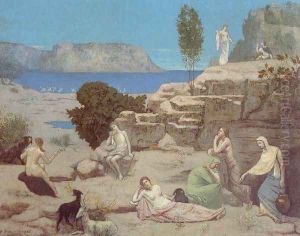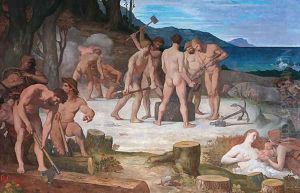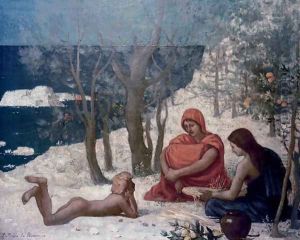Pierre Cecile Puvis de Chevannes Paintings
Pierre Cécile Puvis de Chavannes was a French painter, who became one of the most prominent figures in French art during the second half of the 19th century, known for his mural painting and his role in shaping the Symbolist movement. Born in Lyon, France, on December 14, 1824, into a noble family, Puvis de Chavannes was initially educated in the sciences per his family's wishes, but he found his true calling in art.
After a brief stint at the Lycée Henri-IV in Paris, he trained under the Romantic painter Eugène Delacroix and later with the academic painter Thomas Couture. However, Puvis de Chavannes's style was neither Romantic nor strictly academic; instead, he developed a distinctive approach characterized by a calm, serene aesthetic that emphasized classical composition, clear outlines, and muted colors.
Puvis de Chavannes's large-scale wall paintings are celebrated for their poetic grace and their ability to evoke a mythic, timeless aura. His works often depicted allegorical and historical subjects, designed to complement the architecture of the buildings they adorned. Among his most famous murals are those at the Panthéon in Paris, the Sorbonne, and the Hôtel de Ville. He also worked on the decoration of the Boston Public Library in the United States.
In addition to his murals, Puvis de Chavannes painted a number of easel paintings, though these tend to be less well-known. His style influenced many other artists, including the Nabis and the Symbolists, and he was admired by contemporaries such as Edgar Degas and Édouard Manet. Despite his influence, he was somewhat of an outsider in the art world, choosing to distance himself from the formal art establishment and instead seeking inspiration from his own ideals and visions.
Puvis de Chavannes served as the president of the Société Nationale des Beaux-Arts, and his work received significant recognition in his later years. He was awarded the Grand Medal of Honor at the Paris Exposition Universelle in 1889. He never married and lived a discreet personal life, focusing intensely on his artistic pursuits. Puvis de Chavannes died in Paris on October 24, 1898. His legacy endures, and he is remembered as a key precursor to modernist movements and a master of monumental painting.
